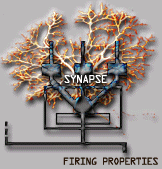 STARTING WITH P-CONSCIOUSNESS
STARTING WITH P-CONSCIOUSNESS STARTING WITH P-CONSCIOUSNESS
STARTING WITH P-CONSCIOUSNESS
Ned Block
"A physical theory gives us a theory of physical processes." The physical theory of reproduction of our planet's life is the narrative of the details of the DNA replication process. Accordingly, no further question follows. The huge molecule and its related enzymes depend only on physical processes.
"A psychophysical theoryshould tell us, perhaps in the future, how the physical processes give rise to experience. We know that P-conscious experience depends, at least partially, on physical processes. But how can P-conscious experience emerge from a world with a closed physics alien to consciousness, Chalmers' hard problem?
Chalmers recently proposed a tentative solution to the harder part of the problems associated with a physical-psychophysical explanation of consciousness, an issue related with more or less imagination - during the last decades - to nonlinear dynamics, chaos theory, hologram physics, self-organization and quantum mechanics, among many other proposals. He suggests that Claude E. Shannon's information theory, with a dual interpretation, may help us in presenting a non-reductive solution according to which the hard problem (the emergence of P-conscious experience in the course of a physical-psychophysical narrative) should, in principle, be explainable. The dual information theory should provide a neo-classical physical body of knowledge and should introduce a fundamental explanation regarding the hard problem of consciousness. According to Chalmers it should be non-reductive in the sense that this dual side Information Theory is outside closed Physics, ("it seems that physical laws already form a closed system"). We ask if closed Physics cannot explain awareness to either negative- or positive-opportunities (perceptions of either dangers or benefits as real dangers or benefits); and if it also cannot explain either A- or P-consciousness. If the answer to both questions were No, the dual theory added to the closed Physics may warrant a hard-to-obtain Yes on the long run. "We know that experience depends on physical processes, but we also know that this dependence cannot be derived by (closed) physical laws alone. The new basic principles postulated by a nonreductive theory give us the extra ingredient that we need to build the explanatory bridge... Nothing in this approach contradicts anything in physical theory. We simply need to add further bridging principles to explain how P-conscious experience arises from physical processes."
.A function of consciousness is to facilitate reasoning, reporting and guiding action. When consciousness is missing, subjects cannot reason, speak about the non-conscious contents or use them to guide action
This reasoning is [partially] captured in a model suggested by Daniel Schacter (1989--see also Schacter, et.al., 1988) in a paper reviewing phenomena such as the ones described above. The model is only partial (that is, it does not model all aspects of the mind), and so may be a bit hard to grasp when reducing black boxes to plays among inputs and outputs. Think of the hands and feet as connected to the Response System box, and the eyes and ears as connected to the specialized modules. (These suggestions are oversimple). The key feature of the model is that it contains a box for something called "phenomenal consciousness". Simplifying again, phenomenal consciousness is experience; what makes a state phenomenally conscious is that there is something "it is like" (Nagel, 1974) to be in that state. The model dictates that the phenomenal consciousness module has a function: it is the gateway between the special purpose "knowledge" modules and the central Executive system that should be in charge.
NEXT
OTHER
2.feb.1999
Pulsar tecla de vuelta
Glosario de Carlos von der Becke.